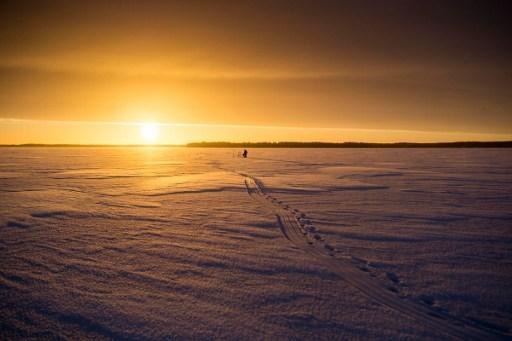This winter, the ice sheets covering the Arctic Ocean reached, when at their maximum surface area before the snowmelt, an all-time low. It was, in fact, their lowest surface area in 38 years. On Wednesday, NASA and the National Snow and Ice Data Centre (“NSIDC”) made a significant announcement.
With a 14.42 million km2 surface area on March 7th, the Arctic sea ice had recorded its lowest surface area, in the very depths of the winter season.
This was for the third consecutive year since satellite records began. Such records first started in 1979.
In 2015, the maximum surface area was 14.51 million km2 and in 2016 14.52 million km2.
Scientists from the NSIDC attributed the decrease to a very warm autumn and winter, where the temperature at the surface of the Arctic Ocean was 2.5 degrees Celsius above the average.
In 2016, the Arctic saw its warmest year since records began in the region in 1900. This is according to the National Oceanic and Atmospheric Administration (“NOAA”).
Moreover, data coming from the European Space Agency's (“ESA”) CryoSat-2 satellite shows that the Arctic sea ice was slightly thinner than during the last four years.
Other measurements, made by the University of Washington within the auspices of the “Pan-Arctic Ice Ocean Modeling and Assimilation System” programme, have drawn similar conclusions. These are that the volume of the Arctic ice sheets is unusually low for this time of year.
An NSIDC scientist, Julienne Stroeve, said, “Starting the beginning of the thaw season with ice sheets which are this thin is a major change. It indicates the possible setting of a new minimum surface area record for September Arctic sea ice.”
The average area of ice floes on the Arctic Ocean was approximately 10.1 million km2 in September 2016, the season's warmest, or the lowest summer area measured since 1979.
Walt Meier, a scientist from NASA's Goddard Space Flight Centre, points out “Although the maximum surface area of the Arctic ice sheets was not considered to be as significant as the seasonal minimum, this long-term decline is a clear indication of climate change.”
The minimum surface area of sea ice, as seen in September, originally gained a high profile for the first time in 2005. At that time it had reduced to an unprecedented level. A further record was made in 2007 and again in 2012, as well as during the last three years.
The Brussels Times

